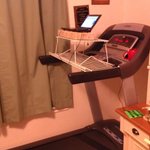I must confess, I never much cared for dogs until I had kids and my wife decided they should have one. I bought a Miniature Australian Shepherd because if I HAD to have a dog, I wanted an actual dog–not something distorted by selective breeding into an affront to the natural world. I exaggerate slightly. The truth is, we had kept a friend’s border collie once and I found her a noble beast, but about three sizes too large for my needs.
Aussies were next of kin to the collie and a miniature breed was available. Other than their size, they were recognizably working dogs, recognizably, in fact, not too distant cousins to the wolf. Breeders warned, however, that an alarming percentage of Aussies, when purchased as pets, end up being taken to the pound. They warned that these were intelligent, willful animals who could not simply be smacked with the odd roll of newsprint and given a bed in the corner. Perfect.
I studied the latest in dog training and psychology. Everything my mother had taught me was completely and utterly wrong, but I could so this. Our dog came from a north Texas equestrian breeder, delivered at great expense by climate-controlled air freight, and no surprise ever more delighted a pair of impressionable girls.
But she never belonged to the girls. I brought her home. I showed her to her food and water. Aussies are bred to have strong jaws. They control sheep by biting at the ankles. Puppies have razor sharp teeth, so I used dog psychology to stop her constant nipping and biting. When she started teething on a $2,000 cherry-wood table, I gave her a more acceptable piece of wood. She started to learn limits, not out of fear, but because I expected it.
She was a sweet little thing when we were home to play with her, but we could not be home all the time. She could escape from or destroy anything of plastic or wood, so expensive steel gates were needed to confine her until she was house-broken. She escaped by squeezing through. I modified. She escaped by leaping over. I adjusted. She borrowed into the wall, I glued up wallboard (I was planning to put wainscoting there anyway).
I taught her a trick, then another, then another. I alternated the toys left out during the day. I taught her to run with my Trike scooter in the fashion of a sled dog and to jog left or right or to check for a post on command. I learned to use hand signals in preference to spoken commands. She learned to find toys by name, to “go get,” to “bring,” to “give,” and to “release,” all as distinct commands. I learned to make her work a little every day, and to recognize pent up energy before it could burst.
Gradually, she slowed down—but not much. She learned how to live in an urban house, and I learned how to be an alpha dog. Often, I know, it frustrates her that I don’t know what any dog should. I took me to or three years to realize why she was so stubborn about eating—she will not eat until I do. I learn and she puts up with me. She lets me bath her and brush her teeth, though she thinks both utterly mad. She makes sure I know when a possum or a squirrel or a blood sucking vampire raccoon is in the yard, and she just knows that if I can just understand her request, I may yet rise up and stop a thunderstorm.
Every night, just like when she was a puppy, she climbs up into my bed and rolls over next to me, exposing her belly for a while, then pads back out to the living room. If she barks in the dead of night, I don’t yell or throw a slipper. I walk out to the living room and ask her what’s what. She runs to a window or door and harrumphs. I turn on the light and look. “Good girl!” I say, “You scarred them away.” I head back to bed and she climbs back up on her perch on the back of the couch. Her fuzzy ear flops and as she rests her lids, but she’s got her eye on things.

